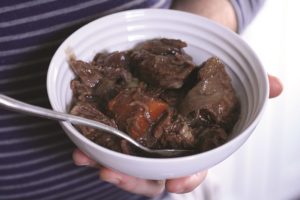Last fall, I taught a foraging class for Wellfleet Elementary School students. We gathered once a week, after school, rain or shine, and headed out into the woods with no particular agenda beyond identifying and collecting edible plants. It turned out to be the best hour of my week, every week.
We couldn’t range far — there was not enough time, and there were 20 kids in the group. But within our quarter-mile radius we found plenty to get excited about. Two boys were mushroom enthusiasts, and we spent an afternoon in an open area near the baseball field hunting for boletes. We tucked away the good ones for the kids to bring home and laid the slug-eaten remainder out on a patch of sand where they were roundly stomped.
Another day we found an exceptional wintergreen patch, chock full with minty red berries, and a girl volunteered her family ritual of mashing them up in boiling water for tea. We made an extract from the wintergreen leaves, which would come in handy later on.
We collected bayberry leaves to dry and use as a seasoning — they’re not the standard bay laurel, but they add flavor, too.
Finally, on one of our last days, we collected a big bucket of acorns.
I’d learned not long before that acorns are edible, and that the flour you can make from their meats acts as a thickening agent, similar to cornstarch. The foragers had a fantastic time whacking the nuts open with rocks and pulling out the meats. Later on, at home, my girls and I ground them into coarse bits and soaked them in cold water to draw out bitter tannins. After about a week of daily changes, the bitterness was gone and we dried the acorn bits in our dehydrator.
Just before our last class, which was to be a feast, we ground the acorn bits into a fine brown flour and tested its thickening powers in a simple beef stew. We followed a recipe from the People’s Path website — where acorn stew, originally made with venison, appears in a section on North American Indian foods.
I was amazed by how velvety the acorn flour made the broth — almost gravy-like. We celebrated the end of our class with that acorn-thickened beef stew and wintergreen ice cream.
Since then, my girls and I have made the stew a few times. Each time it surprises me the way so few simple ingredients, just beef — not even browned, just simmered for a good long time — water, and acorn flour can combine into something so tasty. Even so, recently, we’ve started branching out, adding onions and carrots. And you could certainly add others. I cut the vegetables in large pieces and simmer them along with the beef. My girls appreciate the way they disappear, mostly, into the stew.
Don’t worry if the acorn flour project eludes you. A simple stovetop stew is still a very worthy main course that young cooks can do every part of — just thicken it with a cornstarch slurry at the end.

Acorn Beef Stew
Serves 4
3 lbs. beef chuck roast
2 large carrots
2 large onions
½ cup acorn flour
(or ¼ cup cornstarch)
Salt to taste
Cut the beef into large pieces and place in a stew pot. Peel the carrots and cut them into big chunks. Quarter the onions. Add the vegetables to the pot, then add water to cover.
Simmer, covered, for 4-5 hours, until the meat is very tender. Remove the meat from the juices, cut it into bite-sized pieces, and return it to the pot.
Add salt to taste, then stir in the acorn flour. Heat until thickened, stirring often, about 10 minutes. (If you’re using cornstarch, mix it with a little water and stir in the slurry a little bit at a time until you get the desired thickness.)
Check the seasoning and serve the stew hot.
